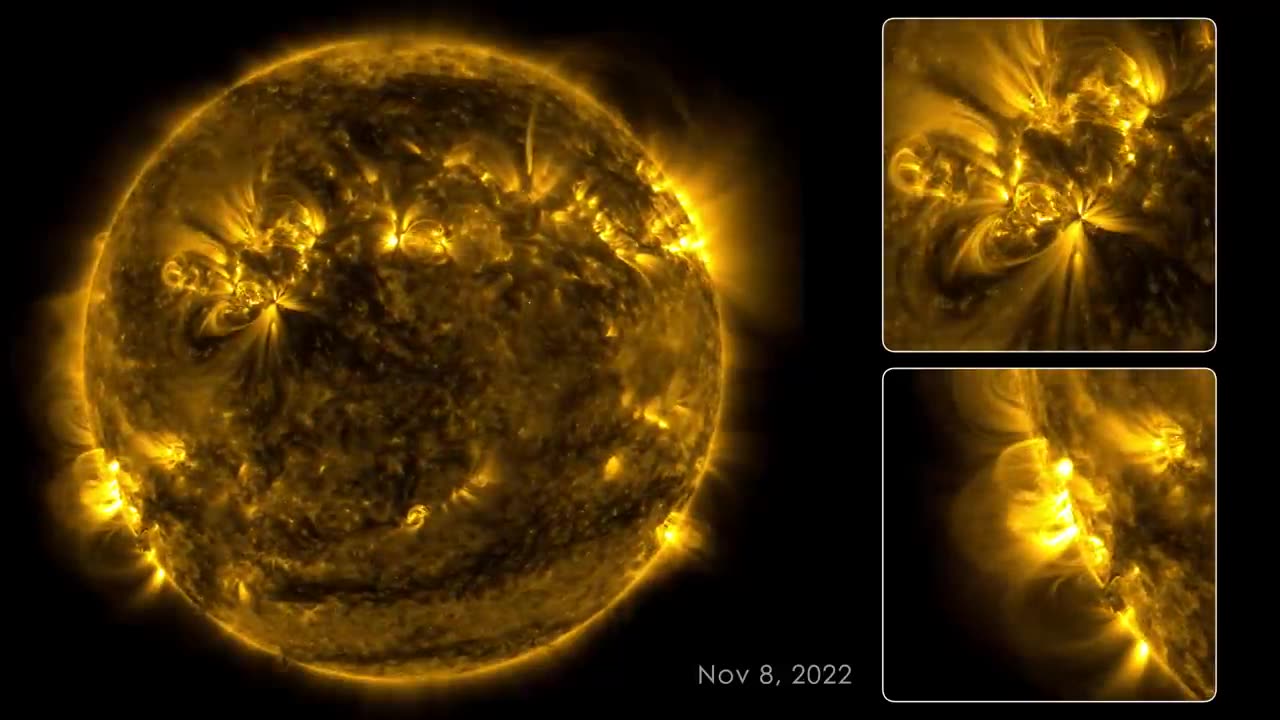Premium Only Content

The Sun
133 days on the SUN.
Characteristics of the sun
The sun resides some 26,000 light-years from the Milky Way's center, in a tendril of our home galaxy known as the Orion Arm. Every 230 million years, the sun—and the solar system it carries with it—makes one orbit around the Milky Way's center. Though we can't feel it, the sun traces its orbit at an average velocity of 450,000 miles an hour.
The sun formed more than 4.5 billion years ago, when a cloud of dust and gas called a nebula collapsed under its own gravity. As it did, the cloud spun and flattened into a disk, with our sun forming at its center. The disk's outskirts later accreted into our solar system, including Earth and the other planets. Scientists have even managed to see these planet-birthing disks around our sun's distant young cousins.
Our home star is a yellow dwarf, a medium-size variety that's fairly common in our galaxy. The label “yellow” is misleading, though, since our sun burns a bright white. On Earth, the sun can take on warmer hues, especially at sunrise or sunset, because our planet's atmosphere scatters blue and green light the most.
From our perspective, “dwarf” might not be the best word for our sun, either. At about 864,000 miles (1.4 million kilometers) wide, the sun is 109 times wider than Earth, and it accounts for more than 99.8 percent of the solar system's total mass. If it was a hollow ball, more than a million Earths could fit inside it. But the sun isn't hollow: It's filled with scorching gases and soups of electrically charged particles called plasma. The sun's surface temperature is about 10,000 degrees Fahrenheit (5,500 degrees Celsius), and it's 27 million degrees Fahrenheit (15.5 million Celsius) at the core.
Deep in the sun's core, nuclear fusion converts hydrogen to helium, which generates energy. Particles of light called photons carry this energy through a spherical shell called the radiative zone to the top layer of the solar interior, the convection zone. There, hot plasmas rise and fall like the ooze in a lava lamp, which transfers energy to the sun's surface, called the photosphere.
It can take 170,000 years for a photon to complete its journey out of the sun, but once it exits, it zips through space at more than 186,000 miles a second. Solar photons reach Earth about eight minutes after they're freed from the sun's interior, crossing an average of 93 million miles to get here—a distance defined as one astronomical unit (AU).
Out beyond the sun's photosphere lies the atmosphere, which consists of the chromosphere and the solar corona. The chromosphere looks like a reddish glow fringing the sun, while the corona's huge white tendrils extend millions of miles long. The chromosphere and corona also emit visible light, but on Earth's surface, they can be seen only during a total solar eclipse, when the moon passes between Earth and the sun.
#Sun
#NASA
#NASAMission
#SolarSystem
Follow 👇
https://rumble.com/user/Kami64
-
 LIVE
LIVE
Redacted News
1 hour agoHIGH ALERT! Trump pushes "land war" in Venezuela, and Russia goes nuclear | Redacted News Live
11,648 watching -
 15:38
15:38
Cash Jordan
1 hour agoPortland Zombies EMPTY 52 Stores… Mayor FREAKS as “Sanctuary” SELF DESTRUCTS
16 -
 1:06:06
1:06:06
vivafrei
2 hours agoAnother Illegal Alien Kills Americans! Candace Owens Promises to Violate Kirk Gag Order? & MORE!
91.6K19 -
 1:42:30
1:42:30
The Quartering
3 hours agoTrump Blamed For NBA Rigging Scandal, Major X Change Renders Site Useless, Church Nonsense
115K28 -

MattMorseTV
4 hours ago $49.36 earned🔴Trump makes URGENT ANNOUNCEMENT.🔴
60.2K52 -
 12:05
12:05
Clintonjaws
8 hours ago $7.87 earnedPortland ICE Rioters Getting Arrested - This Is Priceless!
35.9K16 -
 LIVE
LIVE
Side Scrollers Podcast
4 hours ago🔴FIRST EVER RUMBLE SUB-A-THON🔴DAY 4🔴WAKE YOUR ASS UP!
981 watching -
 LIVE
LIVE
World2Briggs
35 minutes agoWhere should you live? Ask me Live
45 watching -
 LIVE
LIVE
LFA TV
18 hours agoLIVE & BREAKING NEWS! | THURSDAY 10/23/25
1,375 watching -
 1:32:57
1:32:57
The White House
2 hours agoPresident Trump Makes an Announcement, Oct. 23, 2025
15.5K13